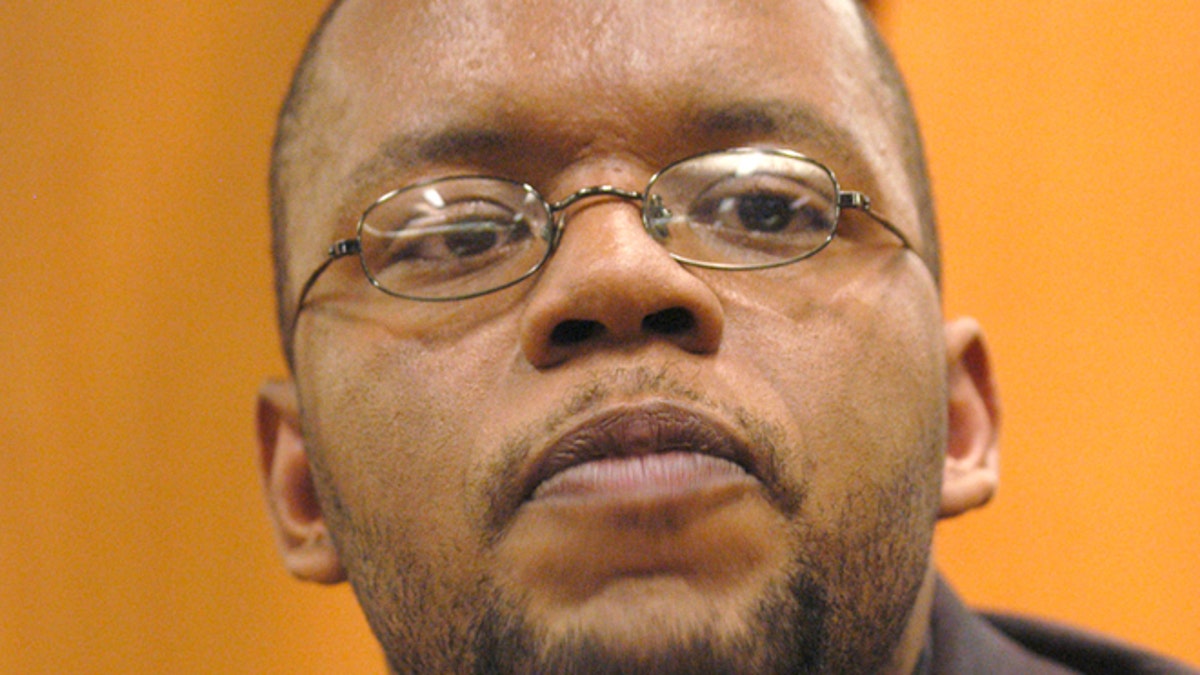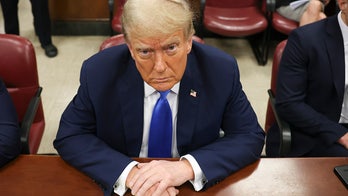
This undated image shows Jayson Blair, former New York Times reporter. (AP)
Also ...
'Morning Joe’ strikes back
Jayson Blair’s fabrications, captured on film, after he disgraced the New York Times
In journalism, it’s hard to stop a pathological liar.
And from the moment I got Jayson Blair on the phone 11 years ago, I knew he was a liar. What took a few more days to discover was the sheer magnitude and breathtaking audacity of his deceptions at the New York Times.
Blair’s serial fabrications are the subject of a new documentary, “A Fragile Trust,” that airs this Monday night on some PBS stations. I’m interviewed in the movie because I broke the story back in 2003.
Blair struggles to explain why he committed journalistic fraud and still can’t quite explain it. His disgrace sparked a national debate over whether the paper had overlooked his problems because of affirmative action, as well as the role of drug abuse in his downfall. Two months after I wrote the first story, the Times executive editor, Howell Raines, and managing editor, Gerald Boyd, resigned.
But as the film shows, none of that was clear when I got the first tip. Blair’s New York Times story on a Texas woman whose son was missing (and later found dead) in Iraq was remarkably similar to a piece in the San Antonio Express-News—down to the description of her patio furniture.
I phoned the editor of the Express-News, who was about to complain to the Times. When I called Blair, he nervously insisted off the record that he had screwed up, mixing up his notes with the San Antonio article he had used for research. I didn’t buy it for a minute. What I didn’t know was that Blair had never gone to San Antonio.
Soon after my story was published in the Washington Post, Blair resigned. The Times had little to say. In that pre-Twitter age, it was easier for news organizations to just stonewall and harder for ordinary folks to call them out. The rest of the press was surprisingly uninterested in the story.
I pored over virtually everything Blair had written for the Times. And I documented how much of it was fiction.
Remember Jessica Lynch? Blair, under a West Virginia dateline, wrote that her father “choked up as he stood on his porch here overlooking the tobacco fields and cattle pastures.” Lynch’s dad told me that Blair never came to the house—and that you can’t see tobacco fields or cows from there.
But the episode that had the most impact on me involved the Rev. Tandy Sloan, a Cleveland minister whose son had been killed in Iraq. Blair had written that his “church was packed” as Sloan spoke about his loss, “women in ornate hats were surrounded by police officers and soldiers, bikers and elegant men in suits and ties.”
I hated having to call him while he was still grieving. But the reverend told me that Blair had never been to the church and had never spoken to him. There were real victims of Blair’s journalistic malpractice, people already in enough pain. Yet none of them complained to the Times, apparently figuring there was no way to right these wrongs.
“Frankly, no newspaper in the world is set up to monitor for cheats and fabricators,” Raines told me.
When the Times ultimately published a zillion-word piece finding problems with at least 36 of Blair’s articles, the extent of the damage finally became clear.
Blair told me in an interview a year later (while peddling a book) that while he suffered from mental illness, “ultimately I was never so impaired that I didn't understand the difference between right and wrong, and I made bad decisions.”
“A Fragile Trust” does a nice job of presenting the differing points of view, from Blair and his allies to Howell Raines. But it doesn’t really examine what I found to be the most troubling part of the story, the newsroom culture that allowed Blair to flourish while editors and reporters who doubted his work didn’t take their suspicions to the top or were ignored.
I found the same phenomenon months later when I wrote about serial fabrications by USA Today correspondent Jack Kelley, whose exposure led the paper’s editor to resign. An internal inquiry later found that a “virus of ‘fear’” infected some parts of the newsroom.
Unfortunately, there have been numerous cases of plagiarism and fabrication since then, including such smart folks as the New Yorker’s Jonah Lehrer. Which is why it’s worth recounting the lesson of Jayson Blair.
'Morning Joe’ strikes back
While “Fox & Friends” dominates morning cable news, there’s a second-place battle between CNN’s “New Day” and MSNBC’s “Morning Joe” that has descended into trash talking.
The New York Times reports that Chris Cuomo and Kate Bolduan, boosted by the relentless Flight 370 coverage, have repeatedly beaten Joe Scarborough and Mika Brzezinski until recently. And that prompted the former congressman to punch back:
“CNN has made itself a punch line on the ‘Daily Show’ for its phony breaking-news headlines and breathless coverage of random ocean debris. “ ‘Morning Joe’ topped CNN in the first quarter by covering hard news, just as we have for the past five years. We will do the same in the future and won’t be distracted by ‘X-Files’ cable news programming.”
Of course, the missing-plane coverage can’t last forever. Right?




